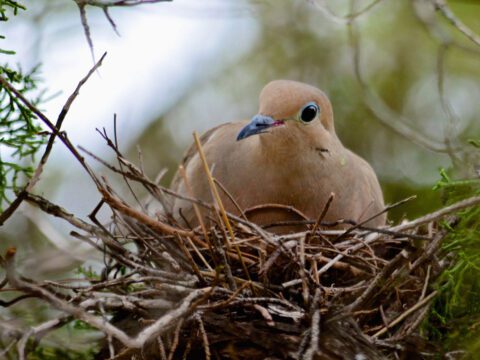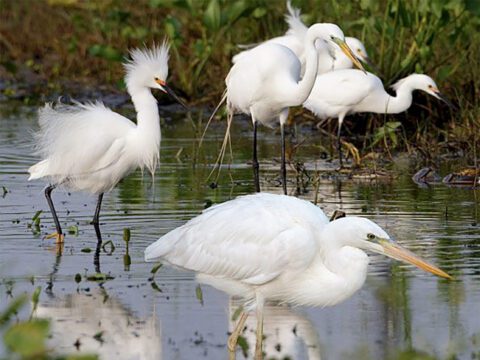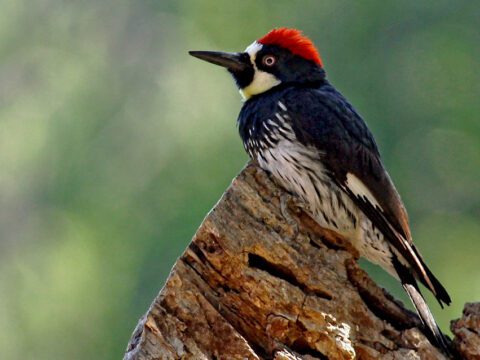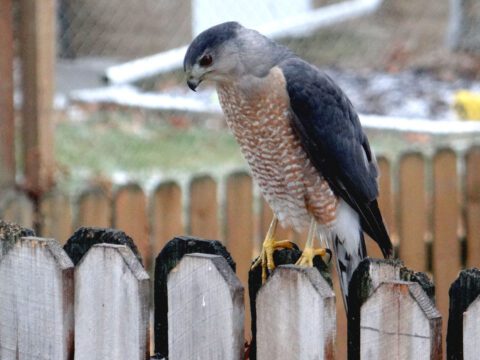How do birds survive in very cold temperatures?
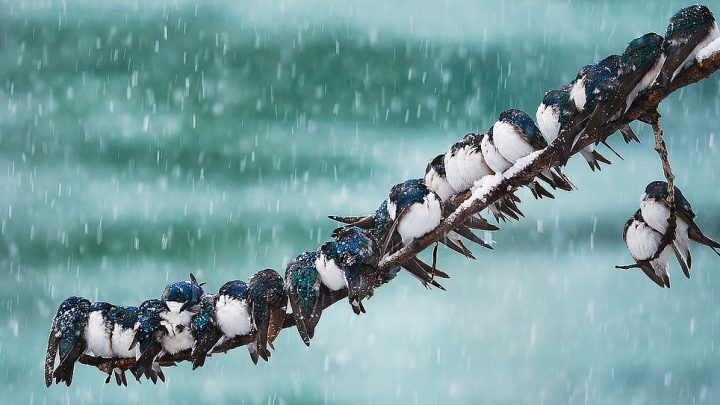
We put this question to Bird Cams project leader Charles Eldermire, who provided a handy 5-step survival guide for birds trying to stay alive in the bitter cold (see his full answer on our blog).
1. They hang out with other birds
Especially if the weather is crummy. Ever notice that nearly all of the birds that hang around in the winter do so in flocks? Having other birds around makes it less likely that something will eat you; more eyes = less chance of a predator sneaking up. Plus, if something does sneak up, you only have to be faster than the guy foraging next to you! Other birds also are also good at letting you know where the primo food is.
2. They eat as much as possible
Park in front of a feeder, some seedy plants, or anywhere there is food (preferably the heaviest, fattiest foods possible, like black-oil sunflower and suet, yum!) and consume. If anyone gets in your way, chase them off and keep eating–unless, of course, they chase you off first. However, don’t eat too much, because it also makes you slower and more likely to get eaten.
3. When they can’t eat more, they can get puffy and rest
Fluffy down feathers help complete the food + feathers = warmth equation. With food in your belly, you can use your metabolism to generate heat. Feathers, in addition to keeping cold air away from your skin, do a great job of trapping body heat instead of letting it dissipate. If you get the chance, tuck a foot or a whole leg up in there. But if you’re a woodpecker–tough luck, because you don’t have any down feathers.
4. They stay out of the wind
Here’s an important hint: if the wind is blowing, go to the other side of the tree and avoid it. Seems simple, right? But it works–trust me (or trust Dr. Thomas Grubb and his 1977 treatise Weather-dependent foraging behavior of some birds in a deciduous woodland: horizontal adjustments). And for any birders out there—you might be surprised how often you see birds doing this (whether to dodge wind or to avoid rain or hot sun) once you start looking for it.
5. They roost in cavities
Birds will never find a warmer spot to sleep than in their own down feathers, nestled in a nook small enough that they can warm it up with any extra heat that does escape. Old woodpecker cavities, crannies beneath the eaves of houses, even a tunnel in the snow… they’re all warmer than spending the night (literally) out on a limb. As an additional trick, some small birds such as kinglets and chickadees can drop their body temperature and go into controlled hypothermia to save energy.
And in addition to this 5-step list, there’s one other very common way that birds survive the cold of winter: they migrate.

All About Birds
is a free resource
Available for everyone,
funded by donors like you
American Kestrel by Blair Dudeck / Macaulay Library

